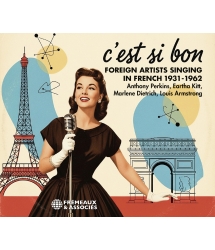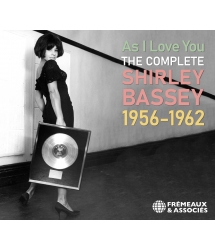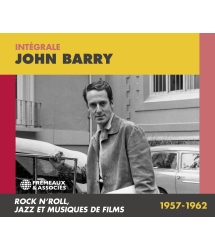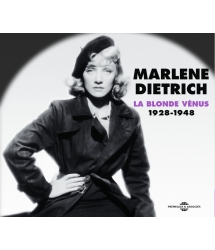- Our Catalog
- Philosophy
- Philosophers of the 20th century and today
- History of Philosophy (PUF)
- Counter-History and Brief Encyclopedia by Michel Onfray
- The philosophical work explained by Luc Ferry
- Ancient thought
- Thinkers of yesterday as seen by the philosophers of today
- Historical philosophical texts interpreted by great actors
- History
- Books (in French)
- Social science
- Historical words
- Audiobooks & Literature
- Our Catalog
- Jazz
- Blues
- Rock - Country - Cajun
- French song
- World music
- Africa
- France
- Québec / Canada
- Hawaï
- West Indies
- Caribbean
- Cuba & Afro-cubain
- Mexico
- South America
- Tango
- Brazil
- Tzigane / Gypsy
- Fado / Portugal
- Flamenco / Spain
- Yiddish / Israel
- China
- Tibet / Nepal
- Asia
- Indian Ocean / Madagascar
- Japan
- Indonesia
- Oceania
- India
- Bangladesh
- USSR / Communist songs
- World music / Miscellaneous
- Classical music
- Composers - Movie Soundtracks
- Sounds of nature
- Our Catalog
- Youth
- Philosophy
- News
- How to order ?
- Receive the catalog
- Manifesto
- Dictionnary











- Our Catalog
- Philosophy
- Philosophers of the 20th century and today
- History of Philosophy (PUF)
- Counter-History and Brief Encyclopedia by Michel Onfray
- The philosophical work explained by Luc Ferry
- Ancient thought
- Thinkers of yesterday as seen by the philosophers of today
- Historical philosophical texts interpreted by great actors
- History
- Books (in French)
- Social science
- Historical words
- Audiobooks & Literature
- Our Catalog
- Jazz
- Blues
- Rock - Country - Cajun
- French song
- World music
- Africa
- France
- Québec / Canada
- Hawaï
- West Indies
- Caribbean
- Cuba & Afro-cubain
- Mexico
- South America
- Tango
- Brazil
- Tzigane / Gypsy
- Fado / Portugal
- Flamenco / Spain
- Yiddish / Israel
- China
- Tibet / Nepal
- Asia
- Indian Ocean / Madagascar
- Japan
- Indonesia
- Oceania
- India
- Bangladesh
- USSR / Communist songs
- World music / Miscellaneous
- Classical music
- Composers - Movie Soundtracks
- Sounds of nature
- Our Catalog
- Youth
- Philosophy
- News
- How to order ?
- Receive the catalog
- Manifesto
- Dictionnary
MEZZE À LA AZZAM 1959 - 1962
BOB AZZAM
Ref.: FA5699
EAN : 3561302569925
Artistic Direction : PHILIPPE COMOY
Label : Frémeaux & Associés
Total duration of the pack : 1 hours 1 minutes
Nbre. CD : 1
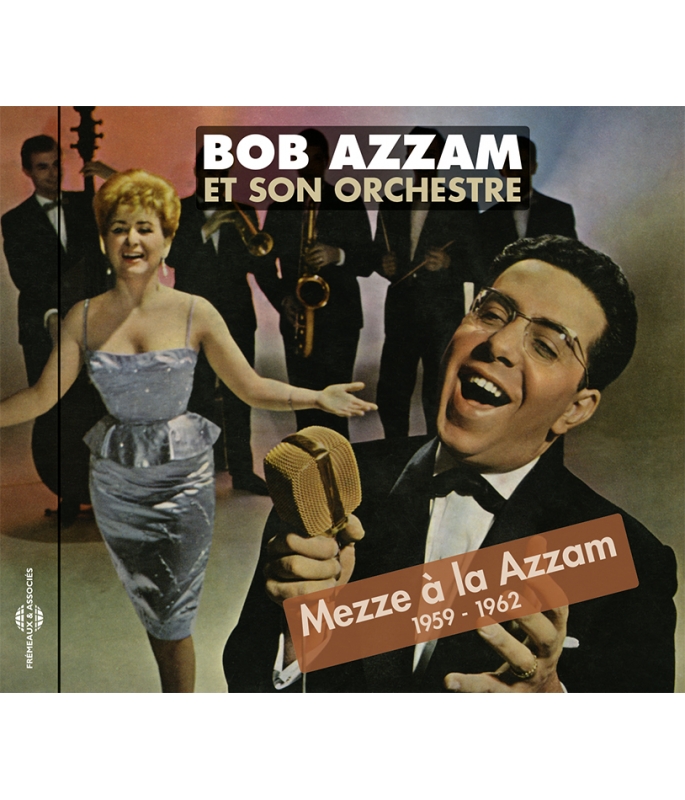
MEZZE À LA AZZAM 1959 - 1962
MEZZE À LA AZZAM 1959 - 1962
In that year of 1960, Bob Azzam dominated the sales-charts with three inescapable hits made for parties: “Mustapha”, “Fais-moi le couscous, chéri” and “C’est écrit dans le ciel”, three titles that mixed good-natured humour with Oriental rhythms. But Bob had many other strings to his bow, as you can hear in this ’mezze’ of 24 songs. Philippe COMOY
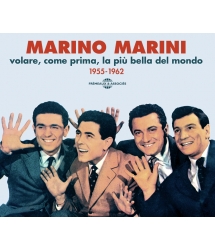
MARINO MARINI
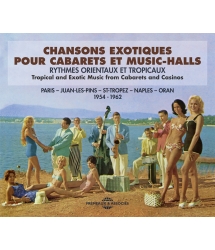
RYTHMES ORIENTAUX ET TROPICAUX
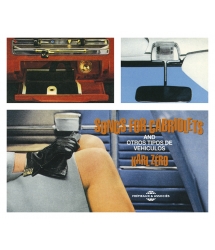
AND OTROS TIPOS DE VEICULOS
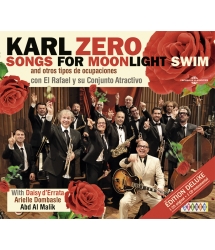
FEAT. DAISY D’ERRATA, ARIELLE DOMBASLE & ABD AL MALIK...





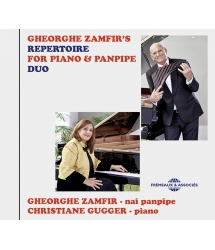
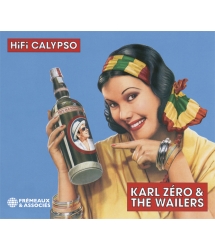
-
PisteTitleMain artistAutorDurationRegistered in
-
1MustaphaBob AzzamFolklore00:02:451959
-
2Fais-moi le couscous, chériBob AzzamArmand Canfora00:02:071960
-
3C'est écrit dans le cielBob Azzamgerges Tabet00:02:321960
-
4Amen twistBob AzzamWilliam Hardy00:02:381961
-
5Cha cha mamboBob AzzamTito Puente00:03:091960
-
6Habibi rockBob AzzamEddie Kochach00:02:331960
-
7La pachangaBob AzzamEduardo Davidson00:02:021961
-
8Ali Baba twistBob AzzamFred Adison00:02:211962
-
9Dracula cha cha chaBob AzzamBruno Martino00:02:441960
-
10Les PapousBob AzzamFrançois Llenas00:02:481960
-
11Kili watchBob AzzamGus Derse00:02:191960
-
12Le marsupilamiBob AzzamGeorges Aber00:02:061962
-
13IsmailiaBob AzzamPaul Piot00:02:091960
-
14Love in PortofinoBob AzzamFred Buscaglione00:03:201959
-
15Viens à Juan-les-pinsBob AzzamMarcel Bianchi00:02:251960
-
16Basel street bluesBob AzzamHans Möckel00:02:261960
-
17RomanticaBob AzzamEduardo Verde00:02:211960
-
18Ven aqui a bailarBob AzzamHans Felka00:03:201960
-
19Auf dem weg nach MarrakeschBob AzzamArmand Canfora00:02:091960
-
20Fleur du diableBob AzzamJerry Leiber00:02:391961
-
21LoveBob AzzamLord Flea00:02:211959
-
22Kisses are sweeter than wineBob AzzamHoward Richmond00:02:311959
-
23You are my destinyBob AzzamPaul Anka00:02:271959
-
24My special angelBob AzzamJimmy Duncan00:03:051959
fa5699
BOB AZZAM
ET SON ORCHESTRE
MEZZE À LA AZZAM
1959 - 1962
France, début 1960
La Vème République a tout juste fêté son premier anniversaire. Le Nouveau Franc vient d’entrer en vigueur. La première bombe atomique française explose au Sahara. Les colonies africaines accèdent à l’indépendance. Mais la guerre d’Algérie, qui mobilise 750 000 soldats, s’éternise sur fond d’attentats, d’émeutes, d’assassinats, et de répression.
Pourtant, paradoxe des paradoxes, c’est sur un rythme oriental, chanté moitié en Français, moitié en Arabe, avec une dose d’Italien pour faire bonne mesure, que se trémoussent les danseurs dans les surprises-parties.
Un chef d’orchestre libanais, fraichement arrivé en France via l’Italie et la Suisse, occupe la tête du hit-parade, où il place coup sur coup trois chansons qui vont être la bande son de cette année 1960.
Il s’appelle Bob Azzam, il a 35 ans. Ses succès que l’on fredonne encore 50 ans plus tard, ont pour titres : Mustapha (Chérie, je t’aime), Fais-moi le couscous, Chéri et C’est écrit dans le ciel.
Mais qui est Bob Azzam ?
On sait finalement assez peu de choses sur lui. Il est né Waddie Georges Azzam, le 24 octobre 1925, sans doute à Alexandrie1, d’une famille d’origine libanaise.
Il poursuit en 1942 des études en électronique dans la Royal Navy britannique. Il crée une petite entreprise dans ce secteur qui travaille en particulier à l’aménagement de palais pour Fayçal d’Arabie.
Il faut noter que, féru de technique, il sera attaché tout au long de sa carrière à la qualité sonore de ses enregistrements. Il est d’ailleurs le créateur d’une chambre d’écho hors studio.
A la fin des années 50, il crée un petit combo à succès qui tourne dans le Levant.
En 1958, il quitte le Liban en raison de la grave crise politique, une de plus, que traverse le pays.
Il démarre alors une carrière artistique en Suisse, en reprenant avec son orchestre les succès de Marino Marini. Il passe dans des émissions radiophoniques en Suisse comme celle de Louis Rey, au Pays-bas, en Allemagne. Dans la foulée, il signe un contrat avec le label Festival créé en 1952 par Louis Merlin et patronné par Radio Luxembourg, et enregistre son premier EP en 1959. Il travaille en parallèle pour le label Barclay avec lequel il décroche son plus grand succès, Mustapha, début 1960. S’en suit alors une série impressionnante de plus de 30 EPs, de 1960 à 1963, souvent récompensés du Grand Prix du disque.
Lors de ses premières sessions, la composition de son orchestre témoigne de son œcuménisme européen :
- Giorgio Susa Yougoslavie Saxo ténor, flute
- Jack Sewing Hollande Basse
- Hans Felka Allemagne Piano
- Gio Roselli Italie Batterie
- Helmer Olsen Danemark Vibraphone, trompette
-
Miny Gérard France Chant, « qui rencontra Bob au Caire, l’aima à Beyrouth et l’épousa à Genève ».
Il participe aussi à plusieurs numéros de Sonorama, un magazine petit format d’un type nouveau qui propose une revue d’actualité accompagnée d’un disque souple de chansons à succès du moment.
Il anime à Genève, place des Alpes, une boite de nuit, le Maxim’s, où se presse une clientèle internationale. Time Magazine se fait l’écho de ce succès dans un article élogieux de mai 1960 titré Most Happy Fellah.
L’année 1960 se conclut par un passage à l’Olympia.
Mais après ces débuts en fanfare, les succès se font plus rares et les ventes moins nombreuses. Car voici venu le temps de la vague des groupes anglo-saxons emmenée par les Beatles, les Stones, les Animals.
Finie l’époque des rythmes exotiques et des danses latino-américaines, l’heure est à la pop music, et les groupes démodent et remplacent les orchestres de danse.
On suit alors la carrière de Bob en pointillé. Fin des années 60, début des années 70, il enregistre plusieurs LPs : At the club Opera Stockholm (Odéon 1967), Toute une époque (Barclay 1968), New sounds (Columbia 1968), B. A. and the great expectations (Columbia 1969), Garden of love (Columbia 1971), qui ne connaissent qu’un succès d’estime même s’ils sont aujourd’hui activement recherchés par les DJs pour leurs samples en raison de l’originalité et du punch de leurs arrangements. On l’aperçoit aussi dans des émissions de télé de variété rétro. Par exemple chez Pascal Sevran, où il chante Romantica, sanglé dans un beau blazer à écusson. Ou encore dans La nuit étoilée, où accompagné au piano par Jean-Pierre Mounier, il chante C’est écrit dans le ciel et Mustapha devant un public dans lequel on reconnait Charles Aznavour, Philippe Bouvard, Frédéric Dard ou Robert Hossein. Il nous quitte le 24 juillet 2004, et repose dans le beau cimetière de Monaco, grandiose et baroque comme un cimetière italien, non loin de la Méditerranée, veillé par les pensées de sa femme Miny Gérard et de ses enfants George et Shérine.
Mezze à la Azzam2
Au Liban, terre d’accueil, de diversité et de partage, le repas commence par un mezze, assortiment de petits plats : taboulé, fattouche, kebbé, houmous, tzatziki, falafel, sambousik, labné, kafta,… La musique de Bob Azzam est à cette image, variée, conviviale, amicale.
Cette anthologie se présente comme un mezze de 24 chansons : les succès bien sûr, mais aussi les danses à la mode, les novelties, le voyage, les langages et l’influence américaine.
Nous vous invitons à un dépaysement dans l’espace et le temps, une balade autour de la Méditerranée en ce début des années 60. Méditerranée dont Fernand Braudel disait : « C’est mille choses à la fois, non pas un paysage mais d’innombrables paysages, non pas une mer mais une succession de mers, non pas une civilisation, mais des civilisations entassées les unes sur les autres. C’est s’étonner devant l’extrême jeunesse de très vieilles villes ouvertes à tous les vents de la culture ». (La Méditerranée, Ed. Arts et métiers graphiques, 1977).
1. Les succès
Mustapha
Connu aussi sous le titre Chérie, je t’aime, c’est le premier succès de Bob Azzam. Sorti fin 1959, il est numéro 1 du hit-parade pendant 18 semaines, du 14 mars au 17 juillet 1960. Il se classe aussi dans les charts belge (#1), hollandaise (#9), anglaise (#27) et allemande (#31). C’est un arrangement d’un vieil air folklorique venu d’Egypte ou peut-être de Grèce, sur lequel Azzam plaque des paroles humoristiques et décousues, en trois langues. L’action, confuse (on y parle entre autres de drogue) se passe à Alexandrie, dans le quartier européen d’Attarine, où se côtoient Grecs, Italiens, Egyptiens, membres de la communauté juive ou copte. On peut entendre cette chanson dans des films égyptiens de l’époque comme Al Fanous al Sehri, avec le comédien Ismaël Yassine, accompagné par les 7 Turin boys (!), ou encore, dans El hobb kedah (l’amour, c’est comme ça), un film de 1961, où l’acteur Salak Dhoul Fikar danse avec la chanteuse libanaise Sabah.
En France, Mustapha est repris entre autres, par Dario Moreno, Staïffi et Orlando, le frère de Dalida. Elle est un temps interdite d’antennes par les autorités qui y voient un hymne officieux des Pieds-noirs. Au fil des années, elle fera l’objet de nombreuses reprises. Retenons la version du guitariste folk anglais Davy Graham sur le EP « From a London Hootenanny » de 1963 et celle du grand amateur de chansons françaises, l’Américain Jonathan Richman sur l’album Think about Mustapha de 1994 où plusieurs artistes (Rachid Taha, Pascal Comelade, …) proposent leur interprétation de ce titre.
Fais-moi le couscous Chéri
Sur des paroles de Jean Henri Bingler, ce boléro oriental composé par Armand Canfora (1921-1973), chef d’orchestre, mari de la chanteuse Amy Anahid, poursuit avec succès la veine orientale de Mustapha et monte à la 16ème place du hit-parade.
C’est écrit dans le ciel
C’est un fox oriental de George Tabet (1905-1984) et Alex Alstone, né en 1910 et qui fera ensuite une carrière de compositeur aux USA, en particulier pour Perry Como.
A noter, le piano à la Maurice El Medioni, les rimes audacieuses : la télévision et le manteau de vision, et les laï laï laï, qui prédatent Enrico Macias.
C’est écrit dans le ciel reste 35 semaines au hit- parade et atteint la 8ème place.
Amen Twist
Ce gospel en canon est un arrangement de Bob Azzam sur un air religieux. Il connait un succès interna-tional, comme en témoigne ce souvenir du saxophoniste camerounais Manu Dibango, dans son autobiographie « Trois kilos de café » (Lieu Commun - 1989) : « Quand surgit, telle une bombe, Amen Twist, le disque-tube de Bob Azzam. La vogue déferle sur le Tam-Tam3. Les danseurs en redemandent. Je n’en connais pas d’autre, alors je réfléchis… C’est du rock blues. J’invente. Mon premier twist s’appele « Twist à Léo » (pour Léopolville) ».
2. Bob vous fait danser
L’orchestre de Bob Azzam était d’abord tourné vers la danse. A la fin des années 50, ce sont les rythmes latino-américains qui tiennent le haut du pavé. Chaque année amène une nouvelle mode : rumba, samba, mambo, cha cha cha, bossa nova, pachanga. Elles seront progressivement remplacées par les danses venues des USA : rock, twist, madison …
Cha cha Mambo
En 1956, c’est un succès pour Tito Puente, le Portoricain de Spanish Harlem, sur le label Tico records. Bob Azzam en donne une version en Espagnol, indolente, où le temps s’écoule lentement, comme écrasé par la chaleur de l’été.
Habibi Rock
Connu également sous le titre Shish Kebob Rock, Habibi Rock est un morceau de Eddie « The sheik » Kochach un natif de Brooklyn, créateur de parodies appelées Ameraba (pour American pop + Arab music). Bob Azzam en donne une version française savoureuse qui fait rimer Shish Kebab avec Baobab et ville de Bagdad.
La Pachanga
Ce rythme venu de Santiago de Cuba est un mélange de merengue et de conga. Il est popularisé en 1960 par Eduardo Davidson, un Cubain exilé aux USA.
Sa fusion ultérieure avec le rhythm and blues donnera naissance au boogaloo.
Ali Baba Twist
Ce titre est écrit par Fred Albert Lapeyrere (1908-1996), dit Fred Adison, et Joseph Strnad, dit Joe Stupin. Il est repris par Claude François pour son premier EP, paru sous le nom de Kôkô.
Pour la petite histoire, Bob Azzam est indirectement responsable de la carrière de Claude François : en septembre 59, il refuse une tournée en Egypte et se fait remplacer par l’orchestre de Marcel Bianchi dans lequel Claude François est percussionniste. Celui-ci refuse à son tour le voyage et démarre alors une carrière de chanteur.
3. Les novelties
Les Américains ont créé ce terme pour désigner une chanson drôle, parodique, au contenu décalé, humoristique ou loufoque. En France, outre Bob Azzam, le roi de la Novelty a été Henri Salvador avec ses reprises de succès américains (Zorro est arrivé, Juanita Banana, Bouli Bouli,…). Bob Azzam s’y essaie tout au long de sa discographie.
Dracula Cha Cha Cha
Cette chanson célèbre le personnage créé par le romancier britanique Bram Stocker en 1897, porté à l’écran dès 1921 et immortalisé par l’interprétation de Christopher Lee en 1958 dans le Cauchemar de Dracula de Terence Fisher. Bob Azzam donne la version française du succès italien de 1959 de Bruno Martino.
Les Papous
Dans ce calypso-rock de François LLenas et Noël Roux, Bob Azzam reprend avec talent un succès de Henri Salvador, dont il retrouve la douceur, la tendresse naïve, l’ambiance de comptine. Bourvil en donne également une version.
Kili Watch
Ce titre nous fait faire un détour par la Belgique, qui a toujours beaucoup aimé Bob Azzam. Car on aime bien danser en Belgique, comme en témoigne le format de poche Marabout Flash n°2 « Dansons », où Bob apparait au chapitre Cha Cha Cha.
Kili Watch est au départ un chant scout, dont le groupe bruxellois Les Cousins (du nom d’un club populaire sur la Grand’ Place) fait un succès en octobre 1960. C’est sans doute l’un des premiers rocks belges qui sera repris dans la foulée par Johnny Halliday pour son 4ème EP. Notons la présence de ce titre dans le EP « Boum HEC 1961, Mettons-nous au vert » édité à l’occasion - Barclay 72450
Le Marsupilami
Ce personnage de BD, originaire de « Palombie », est créé en 1952 par le génial dessinateur belge Franquin. La chanson qui lui rend hommage est écrite par Georges Aber et Daniel Gérard, qui en donne également sa propre version.
Ce titre est aussi présent sur le EP promotionnel « Au Palace Hotel Gstaad » (Barclay 72568), édité pour son propriétaire Ernest Schehz, signe de la popularité de Bob dans les stations à la mode.
4. Bob le voyageur
Une route qui mène de l’Egypte natale de Bob Azzam à la Suisse où il s’installera, en passant par les stations balnéaires chics de la Riviera italienne et française.
Ismaïlia
Fondée en 1863, lors de la construction du Canal de Suez, cette ville a donné à la chanson française Claude François et Louis Cheddid.
Paul Piot est l’auteur de ce boléro oriental qui ne déparerait pas la BO d’un « OSS 117 » ou d’un « Monocle ».
Love in Porto Fino
A 36 km à l’est de Gènes, Portofino, ainsi nommée à cause du grand nombre de dauphins dans son golfe, fut appréciée par Nietzsche, Maupassant et même Eva Braun. Dès 1950, elle est la station balnéaire italienne à la mode. En 1954, Mankiewicz y tourne des scènes de la Comtesse aux Pieds Nus. Elle est célébrée en 1958 dans le hit international de Fred Buscaglione « Love in Portofino », repris ensuite par Dalida et Bob Azzam.
Viens à Juan Les Pins
Cette composition du guitariste corse de Marseille Marcel Bianchi est le titre vedette du EP de Bob qui lui vaudra un Grand Prix du disque.
Basel Street Blues
Quand on est un méditerranéen né sous le soleil d’Egypte, quoi de plus normal que d’avoir le blues dans les rues de Bâle, même si la Suisse se montre accueillante vis-à-vis de Bob et lui offre ses premiers succès radiophoniques.
Cet instrumental écrit pour le 25 cm « Boum chez Bob » est signé Hans Möckel (1923-1983), le chef d’orchestre de la station de radio DSR à Bâle.
5. Bob le polyglotte
Pour trouver des engagements et vendre des disques dans nombre de pays, Bob Azzam pouvait compter sur ses talents de polyglotte. Ils ont certainement contribué à la dimension internationale de sa carrière.
Romantica
Cette chanson représente l’Italie à l’Eurovision 1960, interprétée par l’un de ses auteurs, Renato Rascel. Dalida la chante en Français et l’amène en tête du hit-parade pendant 5 semaines en 1960.
Bob Azzam en donne sa version en gardant les paroles originales italiennes.
Ven aqui a baïlar
Une excursion hispanique pour cette invitation à danser le Cha Cha Cha, composée par le chef d’orchestre de la station suisse romande Hans Felka.
Auf dem weg nach Marrakesch
Sa prononciation germanique aurait sans doute mérité quelques efforts supplémentaires, mais rien n’arrête Bob à la conquête des charts d’Outre-Rhin. D’où cette curiosité, une version de Fais-mois le couscous, où ce plat moins populaire en Allemagne disparaît des paroles au profit de la ville de Marrakech.
Fleur du diable
L’adaptation française de Poison Ivy, un hit des Coasters écrit par le fameux tandem Leiber/Stoller, auteurs de tant de succès inoubliables, en particulier pour Elvis Presley. Le lierre vénéneux du titre original est une métaphore poétique pour évoquer une jeune femme porteuse d’une MST. Les paroles françaises de Georges Kelly restent plus anodines.
Avec cette adaptation, Bob a trois ans d’avance sur les Rolling Stones qui sortiront Poison Ivy en 1964 sur leur premier EP anglais.
6. Le rêve américain
Terminons là où tout a commencé.
Puisqu’il faut une fin à tout, même au plaisir d’écouter Bob Azzam, cette anthologie se conclut avec les 4 titres de son premier disque de 1959, « 4 Boum pour Bob », qui vise la clientèle des danseurs de surprises-parties (ou surboums ou surpats, comme on disait à l’époque).
Bob nous propose 4 adaptations de succès américains du moment, loin de la veine italienne ou orientale qui fera son succès quelques mois plus tard.
Love
Ce mento qui date de 1957 a été créé à Kingston par Lord Flea (1931-1959) et ses Calypsonians. De son vrai nom Norman Byfield Thomas, ce Jamaïcain lance la mode calypso (en réalité le mento) aux USA à la fin des années 50.
Bob Azzam est l’un des premiers à s’en emparer en Europe.
Kisses are sweeter than wine
Newman et Campbell est le double pseudonyme de Howard Richmond l’éditeur du groupe Folk américain The Weavers, dont Pete Seeger était l’un des membres fameux. Kisses are sweeter than wine date de 1950. Elle est inspirée d’une chanson de Leadbelly, elle-même tirée du folklore irlandais. Hugues Aufray en donnera sa version « Ses baisers me grisaient » en 1961, sur une adaptation de Boris Vian.
You are my destiny
Cet énorme succès du Canadien Paul Anka, né de mère libanaise et de père syrien, date de septembre 1957. Toute la jeunesse de France a dansé à cette époque sur ce titre. Dalida en a enregistré une version française sous le titre « Tu m’étais destiné ». Bob Azzam reste fidèle au texte anglais, même si sa version ne fait pas oublier celle de Paul Anka.
My special Angel
Cette chanson de 1957 du Texan Jimmy Duncan est devenue un classique de la Country Music, jouée en particulier par Sonny Land, Bobby Helms et reprise en 1960 par Bill Haley.
Philippe Comoy
Avec mes remerciements
à Annie Larroque et Philippe Lesage
© 2018 Frémeaux & Associés
1. Dans sa version de Mustapha, il évoque en arabe une rue du quartier européen d’Alexandrie : « 7 ans rue Attarine, Maintenant nous dînons chez Maxim’s ».
2. J’espère que ce palindrome approximatif aurait plu à l’Oulipien Georges Pérec, qui appréciait la musique de Bob, comme en témoigne la citation #290 de son livre «Je me souviens» (Hachette P.O.L. 1978) : « Je me souviens de Chérie je t’aime, Chérie je t’adore (également connu sous le nom de Mustapha), interprété par Bob Azzam et son orchestre ».
3. Le night-club que Manu Dibango avait ouvert à Kinshasa
MEZZE A LA AZZAM
Bob AZZAM and his orchestra
1959 - 1962
France, early 1960
France’s 5th Republic had just celebrated its first anniversary. The new-value Franc had just gone into circulation, and the first French atomic bomb exploded in the Sahara. African colonies gained independence. But the Algerian War, which mobilized 750,000 soldiers, dragged on against a backdrop of attacks, riots, assassination and repression.
And yet, a paradox among paradoxes, it was to an Oriental rhythm, and sung half in French, half in Arabic (with a dose of Italian for good measure), that dancers shook their hips at parties. One Lebanese bandleader, a recent arrival in France via Italy and Switzerland, occupied the top of the hit parade where, one after the other, he placed three songs that would make up the soundtrack for the year 1960.
His name was Bob Azzam and he was 35 years old. His hits—which people still whistle and hum some fifty years later—carried these titles: Mustapha (Chérie, je t’aime), Fais-moi le couscous, Chéri and C’est écrit dans le ciel.
But who is Bob Azzam?
Little, finally, is known about him. He was born Waddie Georges Azzam on October 24, 1925, probably in Alexandria1, into a family of Lebanese origin.
In 1942 he was studying electronics in the British Royal Navy. He founded a small company in that same field, and did some business that involved work at the palaces of King Faisal of Saudi Arabia. It is to be noted that he was very keen on technology, and throughout his career he would show a particular attachment for the sound quality of his recordings. He was also the creator of an echo chamber outside of the studio.
At the end of the Fifties he set up a successful little combo that toured in the Middle East.
In 1958 he left Lebanon due to the seriousness of yet another political crisis afflicting the country.
He then began an artistic career in Switzerland, taking up the hits of Marino Marini with his own orchestra. He appeared in Swiss radio programmes like that of Louis Rey, and also in The Netherlands and Germany. While he was at it, he signed a contract with the Festival label, set up in 1952 by Louis Merlin and sponsored by Radio Luxemburg, and recorded his first EP in 1959. In parallel he worked for the Barclay label, where he notched up his greatest hit, Mustapha, early in 1960. There followed an impressive series of more than 30 EPs (from 1960 to 1963), often receiving a Grand Prix du Disque award.
In Azzam’s first sessions, the composition of his orchestra already showed his European ecumenism:
- Giorgio Susa Yugoslavia Tenor sax, flute
- Jack Sewing Holland Bass
- Hans Felka Germany Piano
- Gio Roselli Italy Drums
- Helmer Olsen Denmark Vibraphone, trumpet
-
Miny Gérard France Vocalist, “who met Bob in Cairo, loved him in Beirut and married him in Geneva.”
Azzam also appeared in several issues of Sonorama, a new type of small-format review that contained a news-magazine accompanied by a flexi-disc of current hit songs.
In Geneva he ran a nightclub in the Place des Alpes called Maxim’s that drew an international crowd. ‘Time’ Magazine wrote of its success in May 1960, carrying a praise-filled article under the title, “Most Happy Fellah.” At the end of the year he was billed at the Olympia in Paris. After that triumphant debut however, hits were more sporadic and record sales were lower. This was the beginning of the era that saw the arrival of waves of English groups led by The Beatles, Stones and Animals.
Gone was the era of exotic rhythms and Latin dances; now there was Pop music, and small groups replaced the outmoded dance orchestras. Bob’s subsequent career would have gaps that remain unfilled for lack of information. In the late 60’s and early 70’s he recorded several LPs: At the club Opera Stockholm (Odéon 1967), Toute une époque (Barclay 1968), New sounds (Columbia 1968), B. A. and the great expectations (Columbia 1969) and Garden of love (Columbia 1971) were “turntable hits” only, even if DJs still search for them today to use them for sampling due to the punch and originality in their arrangements. Bob Azzam could also be seen in various “retro” pop TV shows, like the one compered by Pascal Sevran, in which he sang Romantica, cinched in an elegant blazer complete with a badge on its breast-pocket. He was also seen on the programme “La nuit étoilée” where, accompanied on the piano by Jean-Pierre Mounier, Bob sang C’est écrit dans le ciel and Mustapha for an audience that included Charles Aznavour, Philippe Bouvard, Frédéric Dard or Robert Hossein.
Bob Azzam passed away on July 24, 2004 and was buried in the beautiful cemetery at Monaco, grand and baroque like an Italian burial-ground and not far from the Mediterranean, where he is watched over by the thoughts of his wife Miny Gérard and his children George and Shérine.
Mezze à la Azzam 2
In Lebanon, a land of welcome, diversity and sharing, meals begin with a mezze, an assortment of little dishes that include a choice of taboulé, fattouche, kebbé, houmous, tzatziki, falafel, sambousik, labné, kafta etc. The music of Bob Azzam is in that image: varied, convivial and friendly.
This anthology is conceived as a 24-song mezze: hits, of course, but also the dances in fashion, novelties, travel, languages and the influence of America. We invite you to a change in scenery both in space and time, a stroll around the Mediterranean in those early Sixties. Fernand Braudel said of the region: “It is a thousand things at once, not one landscape but countless numbers of them, not one sea but a succession of oceans, not one civilisation but many, all piled up one on top of the other. It brings astonishment at the extreme youthfulness of very old cities open to all winds of culture.” (La Méditerranée, Ed. Arts et métiers graphiques, 1977).
1. The Hits
Mustapha
Known also as Chérie, je t’aime, this was the first hit of Bob Azzam. Released in 1959, it was N° 1 in the hit parade for 18 weeks, from March 14 to July 17, 1960. It also had a place in the charts of Belgium (#1), Holland (#9), Britain (#27) and Germany (#31). The song is an arrangement of an old folk tune from Egypt or perhaps Greece, to which Azzam added lyrics, humorous and incoherent, and in three different languages. The “plot”, situated in Alexandria, is confused (there is talk of drugs among other things), and the scene is the European quarter of Attarine, where the population is a mix of Greeks, Egyptian, Italians and the Jewish and Copt communities. You can hear this song in Egyptian films of the period like Al Fanous al Sehri—with actor Ismaël Yassine accompanied by the “7 Turin boys” (sic)—or else El hobb kedah (“Love’s like that”), a 1961 film where actor Salak Dhoul Fikar can be seen dancing with Lebanese singer Sabah.
In France, other singers picked up “Mustapha”, notably Dario Moreno, Staïffi or Orlando, the brother of Dalida. For a time it was banned on the airwaves by authorities, who considered the song to be the unofficial hymn of the Pied-Noir population. Over the years there were numerous covers of the title, among them a version by British folk singer Davy Graham (on the 1963 EP “From a London Hootenanny”), and one by American Jonathan Richman, a great lover of French songs, on the 1994 album “Think about Mustapha,” where several other artists (Rachid Taha, Pascal Comelade et al) did their own versions of it.
Fais-moi le couscous Chéri
With lyrics by Jean Henri Bingler, this Oriental bolero composed by Armand Canfora (1921-1973), the bandleader and husband of singer Amy Anahid, successfully continued in the Oriental vein of “Mustapha” and climbed to N° 16 in the hit parade.
C’est écrit dans le ciel
This is an Oriental fox-trot piece by George Tabet (1905-1984) and Alex Alstone, who was born in 1910 and who later went on to a career as a composer in the USA, working with Perry Como in particular. You can note the piano in the song, reminiscent of Maurice El Medioni, and some bold rhymes (like “television” with “vison”, meaning a mink coat). The “laï laï laï” repeats anticipate French singer Enrico Macias. The song C’est écrit dans le ciel remained in the hit parade for 35 weeks, reaching the N° 8 spot.
Amen Twist
This gospel, sung in canon, is a Bob Azzam arrangement of a religious tune. It was an international hit, as confirmed by the Cameroon tenor saxophonist Manu Dibango in his autobiography “Trois kilos de café” (Lieu Commun, 1989), where he writes, “When, like a bomb, the hit record by Bob Azzam Amen Twist sprang out. The wave rolled right over the Tam-Tam3. The dancers yelled for more. I didn’t know another one, so I thought about it… It’s rock and blues. I invented one. My first twist was called “Twist à Léo” (for Léopoldville).”
2. Bob makes you dance
Bob Azzam’s orchestra was above all a dance band. At the end of the Fifties, Latin-American rhythms ruled the roost, and each new year brought a new fashion: rumba, samba, mambo, cha cha cha, bossa nova, pachanga… Gradually, dances from the USA began replacing them (rock, twist, madison etc.)
Cha cha Mambo
In 1956 this was a hit (on the record label Tico) for Tito Puente, a Puerto Rican from Spanish Harlem. Bob Azzam does a lazy, Spanish version of the song in which time goes by slowly, as if the heat of summer was crushing the song with its weight.
Habibi Rock
Also known by the title Shish Kebob Rock, this “Habibi Rock” is a number by Eddie “The Sheik” Kochach, a Brooklyn-born creator of the parodies called “Ameraba” (for “American/Arab” pop music). Bob Azzam’s French version is tasty for its rhymes like “Shish Kebab” with “Baobab” and “Baghdad”.
La Pachanga
This rhythm from Santiago de Cuba is a mix of merengue and conga. Eduardo Davidson, a Cuban exile in the USA, made it popular in 1960. Its later fusion with rhythm and blues would give birth to the boogaloo.
Ali Baba Twist
A title by Fred Albert Lapeyrere (aka Fred Adison, 1908-1996) with Joe Stupin and one that Claude François picked up for his very first EP released under the name “Kôkô”. Incidentally, Bob Azzam was indirectly responsible for the career of that singer: in September ‘59 Bob turned down a tour in Egypt and was replaced by the orchestra of Marcel Bianchi (in which Claude François played percussion.) In turn, Claude François also turned down the trip, and so began a singing career.
3. Novelties
Americans gave this word to songs that were funny parodies, and whose content had a zany, left-field humour. In France, and apart from Bob Azzam, the king of the Novelty genre was Henri Salvador, with his reprises of American hits (Zorro est arrivé, Juanita Banana, Bouli Bouli, etc.) Bob Azzam’s discography has many songs like these.
Dracula Cha Cha Cha
This song celebrates the famous character created by Irish novelist Bram Stoker in 1897. The Dracula figure appeared in films as early as 1921, and later became immortal after the acting performance of Christopher Lee in 1958, in director Terence Fisher’s “Horror of Dracula”. Bob Azzam sang the French version of the 1959 Italian hit by Bruno Martino.
Les Papous
In this calypso-rock by François Llenas and Noël Roux, Bob Azzam showed his talent in taking up this hit by Henri Salvador, in which he restored all of the original’s soft, naïve tenderness and its nursery rhyme ambiance. Bourvil also sang a version of this.
Kili Watch
This title takes us on a detour via Belgium, which always loved Bob Azzam very much. Because Belgians love to dance, as proved by the paperback edition N° 2 published by Marabout Flash, “Dansons”, where Bob has a mention in the chapter devoted to the Cha Cha Cha. Originally, “Kili Watch” was a Scouts’ song, which the Brussels group Les Cousins (named after a popular club on the capital’s Grand’ Place) turned into a hit in October 1960. This is no doubt one of the first Belgian rock songs that Johnny Hallyday picked up as a result (including it on his 4th EP.)
Le Marsupilami
A comic-strip character from the land of “Palombie”, and the 1952 creation of the Belgian artist Franquin, a genius; the song is a tribute from writers Georges Aber and Danyel Gérard, who would also sing his own version. The title also appears on the promotional EP “Au Palace Hotel Gstaad” (Barclay 72568), released by the hotel’s owner Ernest Schehz. It goes to show how popular Bob was in fashionable ski resorts.
4. Bob the traveller
The road took Bob Azzam from his native Egypt to Switzerland, where he settled, via the chic seaside resorts of the Riviera on the French and Italian sides.
Ismaïlia
Founded in 1863, during the construction of the Suez Canal, this city would give two artists to French song, Claude François et Louis Chedid. Paul Piot wrote this Oriental bolero; it wouldn’t be out of place in the soundtrack of films like “OSS 117” or “The Monocle”.
Love in Porto Fino
36 kilometres east of Genoa is Portofino, named after the great number of dolphins in its gulf. Nietzsche, Maupassant and even Eva Braun appreciated this Italian resort that was fashionable by 1950. Four years later Mankiewicz was filming scenes there for his “Barefoot Contessa”. The resort was celebrated in songs in 1958: both Dalida and Bob took up Fred Buscaglione’s international hit “Love in Portofino”.
Viens à Juan Les Pins
This is a composition by Corsican guitarist Marcel Bianchi from Marseille. It was the main title of the Bob Azzam EP that earned him a Grand Prix du Disque in France.
Basel Street Blues
When you’re a Mediterranean born under the sun of Egypt, what could be more normal that feeling the blues in the streets of Basel? Even when Switzerland always welcomed Bob and gave him his first hits on radio. Hans Möckel (1923-1983), the bandleader of Radio DSR in Basel, wrote this instrumental for the 10” record “Boum chez Bob”.
5. Bob the polyglot
To look for bookings and also sell records in numerous countries, Bob Azzam could count on his polyglot talents, which certainly contributed to give his career an international dimension.
Romantica
This song represented Italy in the 1960 Eurovision Song Contest, sung by one of its writers, Renato Rascel. Dalida sang this in French and took it to the top of the hit parade for five weeks that same year. Bob’s version keeps the song’s original Italian lyrics.
Ven aqui a baïlar
A Spanish outing for this invitation to dance the Cha Cha Cha, composed by Hans Felka, the bandleader of Switzerland’s Radio Suisse Romande.
Auf dem weg nach Marrakesch
Bob Azzam’s German pronunciation would no doubt benefit from a few supplementary efforts on his part, but nothing stopped Bob in his conquest of the hit parades on the other side of the Rhine. Hence this curio, a version of Fais-moi le couscous, in which this dish—it was less popular in Germany—disappears from the lyrics in favour of Marrakesh.
Fleur du diable
This is the French adaptation of Poison Ivy, a hit for The Coasters written by the famous Leiber & Stoller tandem, the authors of so many unforgettable hits, particularly for Elvis Presley. The poisonous ivy in the original title was a poetic metaphor to refer to a young woman with STD. The French words by Georges Kelly are total trivia. With this adaptation Bob had a three-year head start over the Rolling Stones, who put “Poison Ivy” on their first British EP in 1964.
6. The American Dream
Let’s finish where it all started. Since everything has to come to an end—even the pleasure of listening to Bob Azzam—this anthology closes with the four titles of his first record in 1959, “4 Boum pour Bob”, which aimed at dancers who went to parties (also referred to in France in those days as “surprises-parties”, “surboums” and other “surpats”.) Bob’s record contained four American hits of the day, far from the Italian or Oriental veins that would make him successful only a few months later.
Love
This is a Jamaican mento song that dates from 1957. Lord Flea (1931-1959) and his Calypsonians created the song in Kingston. But his real name was Norman Byfield Thomas, the Jamaican artist who launched the calypso fashion—the style was actually the mento—in the USA at the end of the Fifties. Bob Azzam was one of the first to seize the style in Europe.
Kisses are sweeter than wine
Newman and Campbell was the twin pseudonym of Howard Richmond, the publisher of American folk group The Weavers, whose member Pete Seeger went on to fame. Kisses are sweeter than wine dates from 1950, inspired by a Lead Belly song that was itself taken from an Irish folksong. In France, Hugues Aufray recorded a version entitled “Ses baisers me grisaient” in 1961, based on an adaptation by Boris Vian.
You are my destiny
This was an enormous hit for Canadian singer Paul Anka—his mother was Lebanese, his father a Syrian—and it dates from September 1957. Every teenager in France danced to the title after its release. Dalida recorded a French version as “Tu m’étais destiné”, but here Bob Azzam remains faithful to the English lyrics, even if his version doesn’t make you forget Paul Anka.
My special Angel
This 1957 song by Texan Jimmy Duncan has become a country music classic, with notable versions by Sonny Land and Bobby Helms. In 1960, Bill Haley picked it up.
Adapted by Martin Davies
from the French text of Philippe Comoy
With thanks to Annie Larroque and Philippe Lesage
© 2018 Frémeaux & Associés
1. In his version of ‘Mustapha’ he refers in Arabic to a street in Alexandria’s European quarter, saying: “7 years (in) rue Attarine, Now we’re dining at Maxim’s.”
2. I hope this approximate palindrome would have met with approval among the “Oulipo” circle of writers such as Georges Pérec, who liked Bob’s music; evidence can be found in quote #290 taken from his book “Je me souviens” (Hachette P.O.L. 1978) — “I remember ‘Chérie je t’aime, Chérie je t’adore’ (also known as ‘Mustapha’), played by Bob Azzam and his orchestra.”
3. The night-club that Manu Dibango had opened in Kinshasa, formerly Leopoldville.
1. MUSTAPHA (Folklore - Arr. B. AZZAM) Aux percussions : Dalida, 1959 (Barclay 72359) 2’45
2. FAIS-MOI LE COUSCOUS, CHÉRI (A. CANFORA - BINGLER), 1960 (Festival FX 45-1234) 2’07
3. C’EST ÉCRIT DANS LE CIEL (G. TABET - ALSTONE), 1960 (Barclay 72431) 2’32
4. AMEN TWIST (Arr. B. AZZAM), 1961 (Barclay 72491) 2’38
5. CHA CHA MAMBO (TITO PUENTE), 1960 (Festival FX 45-1227) 3’09
6. HABIBI ROCK (F. COCHAK - B. AZZAM), 1960 (Festival FX 45-1227) 2’33
7. LA PACHANGA (DAVIDSON), 1961 (Festival FX 45-1264) 2’02
8. ALI BABA TWIST (F. ADISON - B. AZZAM - JOE STUPIN), 1962 (Barclay 72541) 2’21
9. DRACULA CHA CHA CHA (BRUNINO - B. BRIGHETTI - F. BONIFAY), 1960 (Barclay 72412) 2’44
10. LES PAPOUS (F. LLENAS - N. ROUX), 1960 (Barclay 72431) 2’48
11. KILI WATCH (G. DERSE), 1960 (Barclay 72443) 2’19
12. LE MARSUPILAMI (G. ABER - D. GERARD - B. AZZAM), 1962 (Barclay 72568) 2’06
13. ISMAÏLIA (P. PIOT), 1960 (Festival FX 45-1224) 2’09
14. LOVE IN PORTO FINO (F. BUSCAGLIONE), 1959 (Festival FY 45-2157) 3’20
15. VIENS A JUAN LES PINS (M. BIANCHI - Arr. B. AZZAM), 1960 (Festival FX 45-1234) 2’25
16. BASEL STREET BLUES (H. MöCKEL), 1960 (Festival FLD 254 S) 2’26
17. ROMANTICA (VERDE - RASCEL - F. BONIFAY - R. BERTHIER), 1960 (Barclay 72412) 2’21
18. VEN AQUI A BAILAR (H. FELKA), 1960 (Festival FLD 254 S) 3’20
19. AUF DEM WEG NACH MARRAKESCH (CANFORA - BINGLER - HELMER), 1960 (Decca DL 25041) 2’09
20. FLEUR DU DIABLE (J. LEIBER - M. STOLLER - G. KELLY), 1961 (Festival FX 45-1264) 2’39
21. LOVE (Lord FLEA), 1959 (Festival FY 45-2116) 2’21
22. KISSES ARE SWEETER THAN WINE (NEWMAN - CAMPBELL), 1959 (Festival FY 45-2116) 2’31
23. YOU ARE MY DESTINY (P. ANKA), 1959 (Festival FY 45-2116) 2’27
24. MY SPECIAL ANGEL (J. DUNCAN), 1959 (Festival FY 45-2116) 3’05
En cette année 1960, Bob Azzam domine le hit-parade avec trois succès incontournables des surprises-parties : Mustapha, Fais-moi le couscous, chérie et C’est écrit dans le ciel, qui mêlent humour bon enfant et rythmes orientaux. Mais Bob avait bien d’autres cordes à son arc musical comme l’illustre ce mezze de 24 chansons.
Philippe Comoy
In that year of 1960, Bob Azzam dominated the sales-charts with three inescapable hits made for parties: “Mustapha”, “Fais-moi le couscous, chéri” and “C’est écrit dans le ciel”, three titles that mixed good-natured humour with Oriental rhythms. But Bob had many other strings to his bow, as you can hear in this ’mezze’ of 24 songs.
Philippe Comoy
